 Cover by Tom A. Wright Cover Photo by Jim Cowsert Back Cover Photo by Reid Compton Copyright 2013 by Baseball Info Solutions and Bill James All rights reserved. No information contained in this book nor any part of this book may be used, reproduced or transmitted in any form for commercial use without permission from the publisher. First Edition: November 2013 Published by: ACTA Sports, a division of ACTA Publications 4848 North Clark Street Chicago, IL 60640 (800) 397-2282 www.actasports.com www.actapublications.com ISBN: 978-0879-465131 ISSN: 1940-8668 Printed in the United States of America by McNaughton & Gunn Table of ContentsIntroduction to the 25th Edition The Sporting News used to publish an annual summary of player batting records, the Baseball Register, and you have to understand, I loved the Baseball Register. In the fall of 1988 we still thought of The Sporting News as a national institution, more on the level of Mount Rushmore than The Andy Griffith Show. We didnt really have any intention of competing with the Baseball Register or The Sporting News; it was more along the lines of filling a gap in the market. They didnt publish the Register until the rosters were finalized at the end of spring training, which meant that the book wasnt available until May of next year.
Cover by Tom A. Wright Cover Photo by Jim Cowsert Back Cover Photo by Reid Compton Copyright 2013 by Baseball Info Solutions and Bill James All rights reserved. No information contained in this book nor any part of this book may be used, reproduced or transmitted in any form for commercial use without permission from the publisher. First Edition: November 2013 Published by: ACTA Sports, a division of ACTA Publications 4848 North Clark Street Chicago, IL 60640 (800) 397-2282 www.actasports.com www.actapublications.com ISBN: 978-0879-465131 ISSN: 1940-8668 Printed in the United States of America by McNaughton & Gunn Table of ContentsIntroduction to the 25th Edition The Sporting News used to publish an annual summary of player batting records, the Baseball Register, and you have to understand, I loved the Baseball Register. In the fall of 1988 we still thought of The Sporting News as a national institution, more on the level of Mount Rushmore than The Andy Griffith Show. We didnt really have any intention of competing with the Baseball Register or The Sporting News; it was more along the lines of filling a gap in the market. They didnt publish the Register until the rosters were finalized at the end of spring training, which meant that the book wasnt available until May of next year.
That was kind of ridiculous, and there were problems with the product, which had to do with the fact that the book had been designed in 1940 and had evolved backward. The book didnt publish walks and strikeouts by hitters, or stolen bases. The pitchers records didnt have a Save column. Our notion was to do the things that they chose not to do. In July or August of 1988 I wrote a memo to John Dewan and Don Zminda of STATS, Inc., proposing that we do a book which summarized each players record, but which would come out in the fall and would have a more modern composition of statistical categories. I went to Chicago a few weeks later, and was astonished to discover that John, Don, Sue Dewan and the rest of the staff had taken my memo, and had actually produced the book in draft form.
Astonished may be an understatement. I had worked with New York publishers for about ten years by then, and my experience with publishing companies of the 1980s was that they were not quick on their feet. It was a revelation to me that somebody could, by determination, hard work and modern technology, take something from a concept to a product in the space of a few weeks. In those days I used to work in baseball salary negotiations, on behalf of the players, employed by their agents. It was another revelation to me when, weeks later, I went to a baseball salary arbitration case, and the team had two copies of my bookthis bookon the table. I wouldnt have thought to use my own book as a source, because the rule is that anything that is privately generated is somewhat suspect.
You dont go into a salary arbitration case, as a rule, and say, Here, Ive come up with a new way of rating players. Doesnt work. The next year, there were five copies of the Handbook on the arbitration table, and, the year after that, everybody had one. It had become the standard reference. That was pre-internet, of course; I guess the internet existed then, but the sites and sources we all use now didnt. In ten or twelve years the Handbook had driven The Baseball Register out of existence, which was never our intention, and about which, in all candor, Ive always been disappointed; I loved the old Registers, and I wish they could have found a way to keep the ship in the water.
They needed to be creative, and they werent. We took the book from STATS, Inc. to Baseball Info Solutions. Reagan was President when we started the book. John Dewan and I still work together on this book. I dont see Don Zminda much anymore, although he still works in the business and I still think of him as a friend.
Dont see Sue Dewan as much as I used to, every couple of years, maybe. I quit working with the agents when the money got so big it was no longer money, but the concept of money. I went to work for the Red Sox, eleven years ago, and still do. Hundreds and hundreds of people have worked on the book, over the years. We have gone through generations of software engineers and fact checkers and writers and editors. I wish I could remember all of your names; Id like to thank you all individually.
That doesnt seem practical. And nowwell, 25 years, hard to believe, and the market is changing on us as it did on the other guys, and we wont be able to keep this one afloat forever, either. We add new features every year, occasionally get rid of an old feature; we try to make space and time to do a little bit of original writing each year. Like everyone in our generation, we are trapped in the difficult transition from the hard copy economic models that had existed for many decades to the electronic market. It is not easy to get young people to buy books. But this is not a transition to a darker world, but a transition to something better.
The essential economic problem that the internet has created for publishers is that the production and distribution costs have all but disappeared, and the profit rode on the back of the production and distribution costs. There was a supply chain: Bookstores, book distributors, printers, publishers, writers. The supply chain has evaporated, leaving the publishers and writers standing naked in the rain. The writer and the reader communicate literally at the speed of light. The invention of the automobile was tough on people who made a living selling buggy whips. Dedication Producing this book in the time frame that we do is no small accomplishment. Dedication Producing this book in the time frame that we do is no small accomplishment.
For 14 days after the end of the major league baseball season we give up our personal lives to produce this book. It takes a huge toll on us, our families, and our friends. I would like to dedicate this book to my wife, Renee, and my two children, Cierra and Cayden. I would also like to thank everyone here at BIS that contributed to the creation of this book. Patrick Coyle Acknowledgments With only a couple of weeks between the end of the regular season and the submission deadline in order to get you the book by November 1, The Bill James Handbook requires a lot of work by a lot of very dedicated people. We want to take a moment to thank everyone involved.
Most of all, thank you to Bill James. Of course Bill is the genesis of the Handbook, which is a continuation of many of the ideas that date back to his first Baseball Abstract in 1977. Bill remains intimately involved in the production of the Handbook, from the design of new sections like the Hitter Analysis and Scouting Report to minutia like the projected statistics for players most baseball fans have never heard of. John Dewan is the President of Baseball Info Solutions, and he and his wife Sue Dewan are its majority owners. John never fails to work from cover to cover of the Handbook despite the numerous demands on his time. Jeff Spoljaric coordinated many of the pieces that went into this years Handbook.
In addition to this role, Jeff serves as Vice President of Information Technology. He, Patrick Coyle, and Greg Thomas make the rest of our work possible in the IT department. Patrick took over Handbook production responsibilities from Andrew Gibson, who was busy helping the Pirates to their first postseason berth in two decades. Patrick handled the job gracefully despite its many challenges. Jon Vrecsics, Handbook Stat-Checker Extraordinaire, and Jim Swavely handle the minor league side of our operations while Dan Casey, Mike Piekarski, Todd Radcliffe, and Andy Johnson coordinate the major league side. In addition to leading our small army of video scouts, they are the guys who double and triple-check every last number in the Handbook to ensure its accuracy.
Next page
![Baseball Info Solutions. The Bill James handbook 2014: [the complete up-to-date statistics on every major league player, team and manager through last season]](/uploads/posts/book/187296/thumbs/baseball-info-solutions-the-bill-james-handbook.jpg)

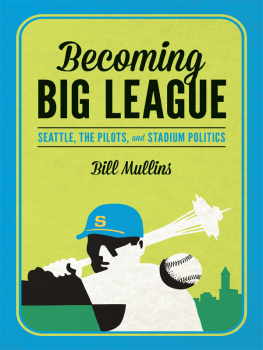
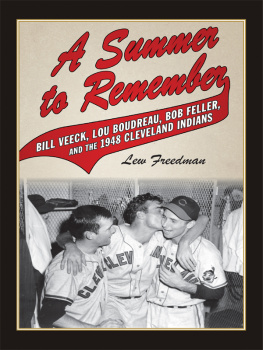

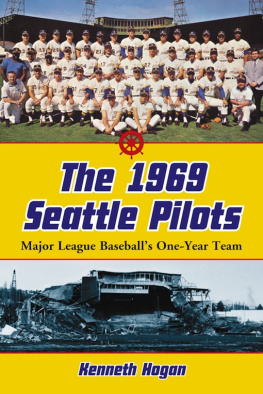
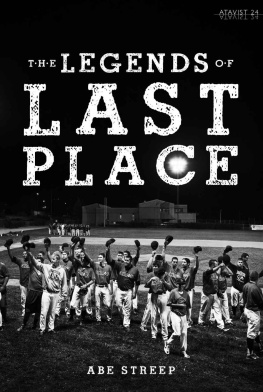
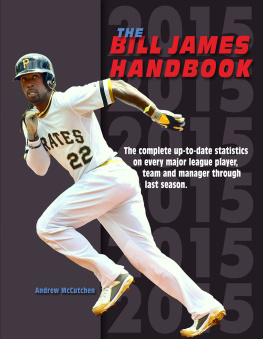
 Cover by Tom A. Wright Cover Photo by Jim Cowsert Back Cover Photo by Reid Compton Copyright 2013 by Baseball Info Solutions and Bill James All rights reserved. No information contained in this book nor any part of this book may be used, reproduced or transmitted in any form for commercial use without permission from the publisher. First Edition: November 2013 Published by: ACTA Sports, a division of ACTA Publications 4848 North Clark Street Chicago, IL 60640 (800) 397-2282 www.actasports.com www.actapublications.com ISBN: 978-0879-465131 ISSN: 1940-8668 Printed in the United States of America by McNaughton & Gunn Table of ContentsIntroduction to the 25th Edition The Sporting News used to publish an annual summary of player batting records, the Baseball Register, and you have to understand, I loved the Baseball Register. In the fall of 1988 we still thought of The Sporting News as a national institution, more on the level of Mount Rushmore than The Andy Griffith Show. We didnt really have any intention of competing with the Baseball Register or The Sporting News; it was more along the lines of filling a gap in the market. They didnt publish the Register until the rosters were finalized at the end of spring training, which meant that the book wasnt available until May of next year.
Cover by Tom A. Wright Cover Photo by Jim Cowsert Back Cover Photo by Reid Compton Copyright 2013 by Baseball Info Solutions and Bill James All rights reserved. No information contained in this book nor any part of this book may be used, reproduced or transmitted in any form for commercial use without permission from the publisher. First Edition: November 2013 Published by: ACTA Sports, a division of ACTA Publications 4848 North Clark Street Chicago, IL 60640 (800) 397-2282 www.actasports.com www.actapublications.com ISBN: 978-0879-465131 ISSN: 1940-8668 Printed in the United States of America by McNaughton & Gunn Table of ContentsIntroduction to the 25th Edition The Sporting News used to publish an annual summary of player batting records, the Baseball Register, and you have to understand, I loved the Baseball Register. In the fall of 1988 we still thought of The Sporting News as a national institution, more on the level of Mount Rushmore than The Andy Griffith Show. We didnt really have any intention of competing with the Baseball Register or The Sporting News; it was more along the lines of filling a gap in the market. They didnt publish the Register until the rosters were finalized at the end of spring training, which meant that the book wasnt available until May of next year.